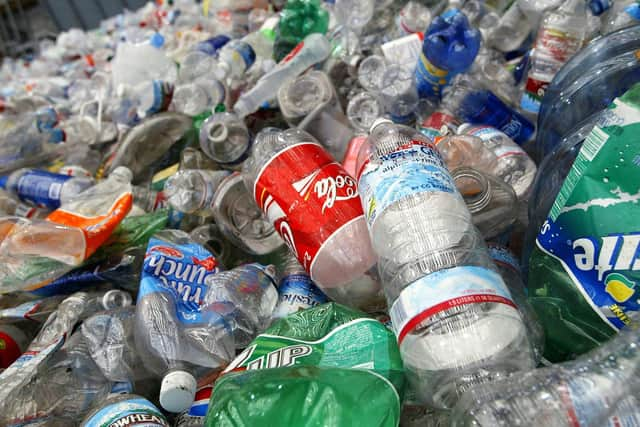Recycling rate in Hertfordshire is ‘edging up’
and live on Freeview channel 276
The amount of waste that was recycled or composted increased in most parts of the county last year, according to latest data collated by the Hertfordshire Waste Partnership.
Councils across the county collect a range of materials for recycling and composting – including paper, cardboard, glass, plastic, food and garden waste.
Advertisement
Hide AdAdvertisement
Hide AdLast year (2020/21) data shows that they collectively dealt with an additional 11,000 tonnes of dry recycling than the year before.


And the amount of compostable material collected – such as garden and food waste – increased by 7,750 tonnes too.
The data shows that recycling rates – measuring the proportion of waste that’s recycled or composted – increased in seven of the 10 district and borough areas.
And across the 11 councils – including the county council – the overall recycling rate edged up from 52.3 per cent in 2019/20 to 52.4 per cent last year.
Advertisement
Hide AdAdvertisement
Hide AdThe biggest increase in the recycling rate last year, according to the data, was in Watford, where it increased by 4.9 per cent to 50.2.
But the district to record the highest recycling rate across the county was St Albans – which at 64.2 per cent is 1.2 per cent higher than last year.
Three Rivers recorded the second highest recycling rate in Hertfordshire for last year at 63.1 – which was one per cent lower than last year.
It was one of just two district and borough councils in the county – alongside North Herts – where recycling rates dropped.
Advertisement
Hide AdAdvertisement
Hide AdAnd although the recycling rate in Stevenage inched up 0.7 per cent from last year, it was still the lowest in the county at 40.2 per cent.
It is one of just four councils where the rate is still below 50 per cent. The others are Broxbourne 42.4 per cent; Hertsmere 44.4 per cent; and Welwyn Hatfield 47.8 per cent.
And the commentary for the annual report was backed by a meeting of the partnership on Monday, November 1.
It notes that the percentage of household waste recycled (including composting) is a national indicator as a measurement of success.
Advertisement
Hide AdAdvertisement
Hide AdAnd it says: “. . . despite the challenges thrown up by the pandemic, during 2020/21 the HWP managed to keep pace with the unprecedented increase in waste edging up its recycling rate to 52.4 per cent, its best result ever.
“Of the HWP’s 11 partner authorities seven managed to increase their individual performance; 1 registered no change; with three partner authorities seeing a drop in performance reflecting the suspension of services during the first lockdown.”
According to the report, the 2020/21 percentage rates (and the percentage change from last year) are: Broxbourne 42.4 (+0.9); Dacorum 54.5 (+1.7); East Herts 51.5 (+0.8); Hertsmere 44.4 (=); North Herts 55.9 (-1.6); St Albans 64.2 (+1.2); Stevenage 40.2 (+0.7); Three Rivers 63.1 (-1); Watford 50.2 (+4.9); Welwyn Hatfield 47.8 (+1.2); and Hertfordshire County Council 56.9 (-1.7).
Overall the rate for the Hertfordshire Waste Partnership – which includes all 11 councils – in 2020/21 was 52.4, which is 0.1 per cent higher than last year.
Advertisement
Hide AdAdvertisement
Hide AdThe annual report will also highlight Three Rivers District Council’s success in topping the ‘Local Authority Recycling League for England’ in 2019/20 – with its rate of 64.1 per cent.
That level – which includes recycling, composting of food and garden waste and ‘reuse’ – is reported to be around 20 per cent higher than the national average for that year.
